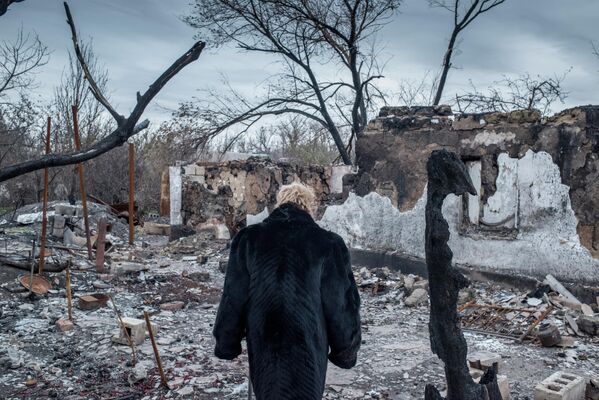
A woman near a destroyed house in the village of Sakhanka, situated in the southern Donetsk People’s Republic on the line of contact between DPR militia and Ukrainian forces. Ukrainian forces have levelled thousands of homes and apartment buildings in Donbass through artillery and air strikes over the past eight years. The people who inhabited them have been left with nothing.
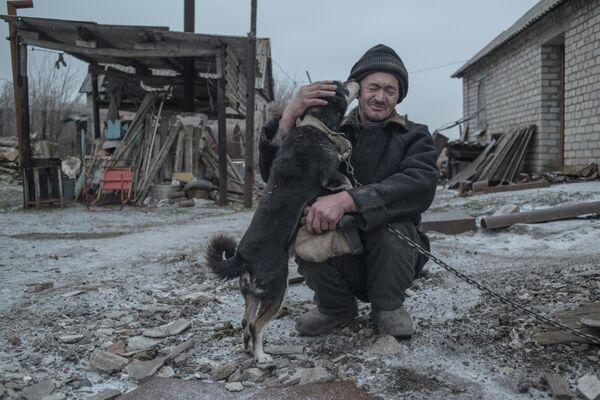
2/19
© Sputnik / Valeriy Melnikov
62-year-old Donbass resident Alexander Vasilyev with his pet pooch. Vasilyev is one of the last residents remaining in the village of Novomaryevka, DPR, which also found itself on the line of contact. This photo is from Valery Melnikov’s Grey Zone series, which won the grand prize at Italy’s Intarget Photolux Award photo contest in 2019.
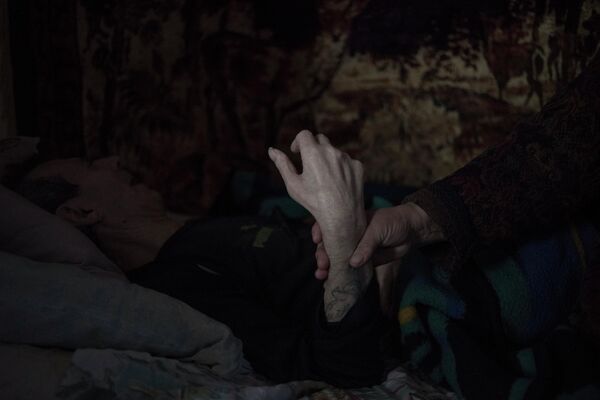
3/19
© Sputnik / Valeriy Melnikov
In this photo, 70-year-old Alexandra Chubarova holds the hand of her paralysed husband, 77-year-old Pyotr Chubarov. Alexandra and Petr are residents Novomaryevka. This photo is also from Valery Melnikov’s Grey Zone series. People who for one reason or another were unable to evacuate have also had to live with the threat of constant shelling. The paralysed, the bedridden, people who have suffered strokes, and those who cannot provide for themselves and live without outside help.
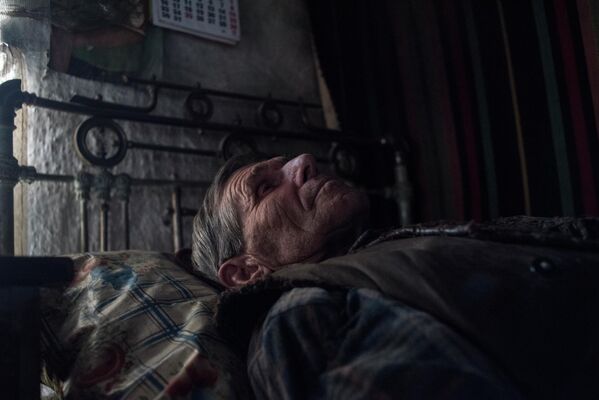
Photo shows a resident in his home in the Novoazovsk district of Donetsk. Desperation, despair, hopelessness, all of this came into the lives of the civilian population of Donbass along with shells when Kiev began its so-called “anti-terrorist operation” in the region in 2014.
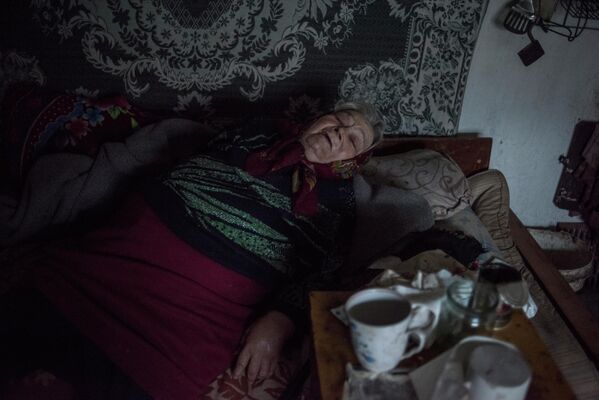
A woman in her home in the village of Sakhanka, DPR. Over half of the village’s pre-war population of about 1,000 left after the conflict began. Bedridden lonely elderly people could only hope for help from neighbours, but due to the shelling, such help has not always arrived in time.
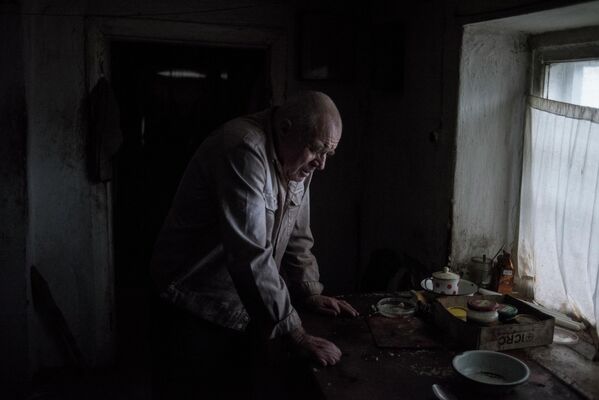
In this photo, a man is in a house in the village of Sakhanka. Sakhanka’s residents have faced constant Ukrainian shelling. On 7 May 2020, five civilians, including two teenagers – a girl with a heart condition and a teenage boy with broken legs and shrapnel wounds, were injured. The girl’s mother was also wounded.
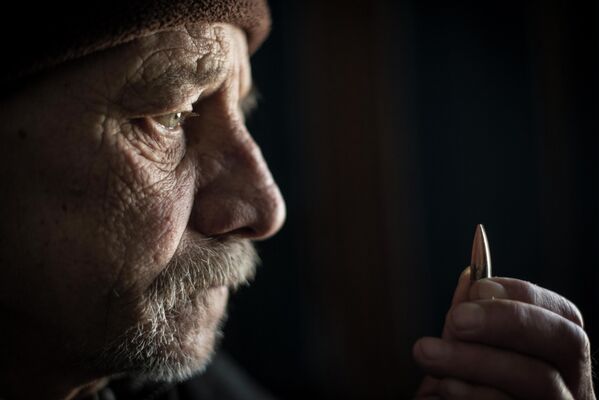
A resident in his flat in the Kievsky district of Donetsk.
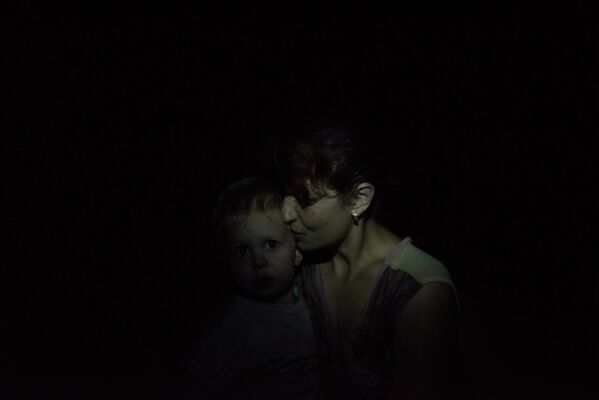
A woman and her son hide in the basement of a house in Gorlovka, 2016. The DPR city of Gorlovka has seen heavy fighting since July 2014 between local militias and the Ukrainian Army. The city has been on the line of fire throughout the war.
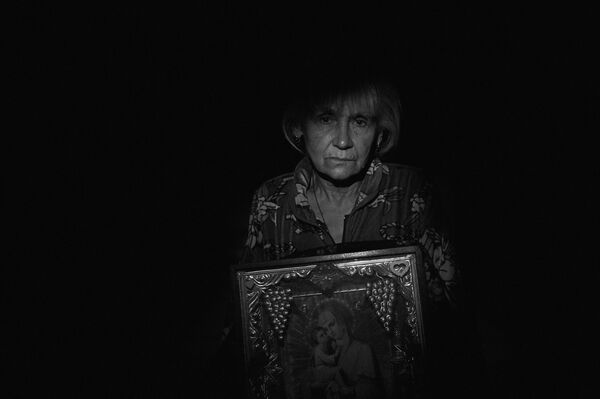
9/19
© Sputnik / Valeriy Melnikov
A woman holds up an icon of the Mother of God while waiting for Ukrainian forces to stop the shelling of the village of Vesyeloe in the Donetsk People’s Republic, 2015. Praying in the darkness in basements and waiting for shelling to stop – this is often all that the elderly, women and children can do.
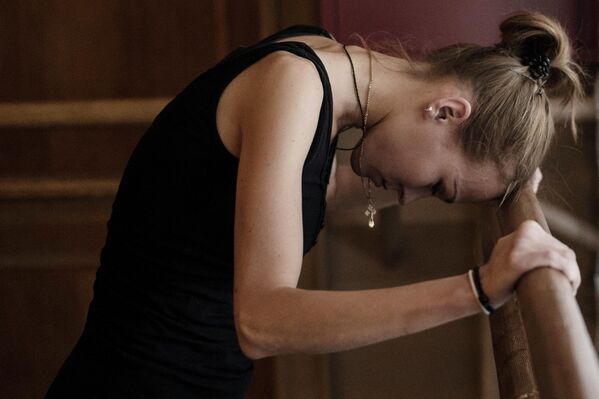
A ballerina during a rehearsal of Swan Lake at the Donetsk Opera and Ballet Theatre, 2015. Donetsk’s Opera and Ballet Theatre did not stop its work even during the most difficult and darkest days of the conflict. It is in the nature of many locals to “live in spite of” – to remain unbroken and unbowed in the face of the most terrible blows.

A girl at a school desk in the village of Sakhanka. Some of Donbass’ children can still recall a peaceful life, but the majority no longer know what it’s like to live when someone isn’t shooting, when they don’t have to take cover from incoming bombs and bullets. Frontline villages have been emptied. Everyone who could leave has gone, and those who remain living on their land are forced to survive as best they can.
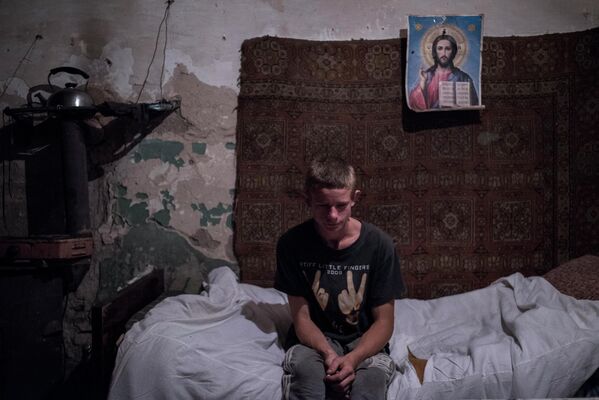
A teenager sits in a shelter in the Shakhty settlement, DPR.
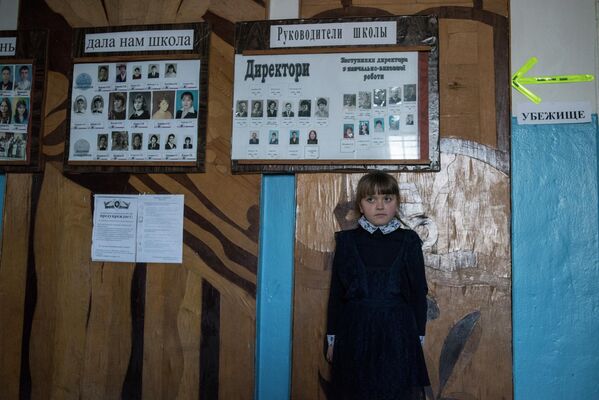
A girl in a school in the village of Sakhanka. Next to her are portraits of teachers and graduates. Signs marked “BOMB SHELTER”, accompanied by bright arrows, are plastered throughout the school. Children in Donbass schools have learned to distinguish the sound of incoming shells, and know well where the nearest bomb shelter is.
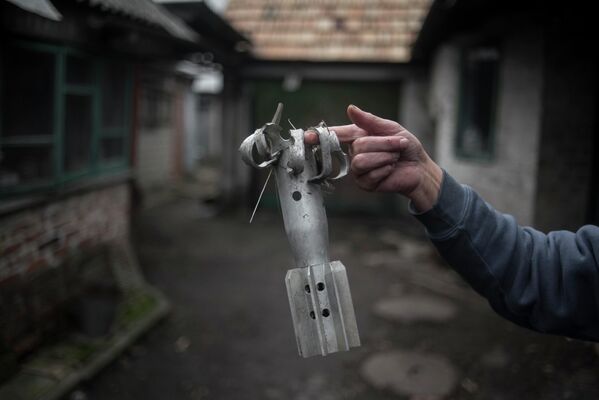
A woman shows a fragment of a mortar projectile in the village of Zaytsevo, Donetsk People’s Republic. Last month, the DPR’s Ministry of Emergency Situations declared that demining Donbass would take decades.
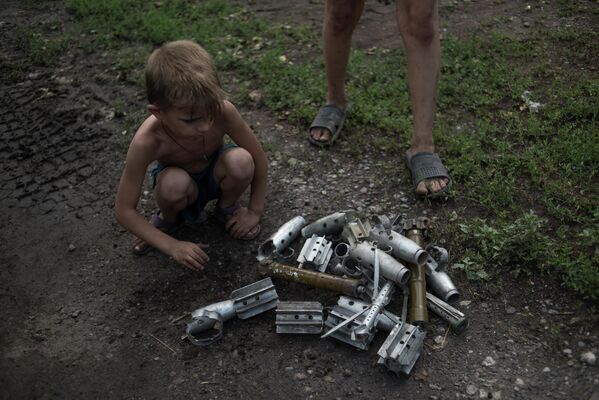
Children play with spent munitions in Gorlovka. Children and war are concepts which shouldn’t mix, but this isn’t the case in Donbass. In eight years of war, a generation of boys has grown up here, for whom playing with the remnants of shells is a common hobby. Dozens of children have been injured, disabled, or killed in explosions of mortar and artillery shells which they found lying in the streets, in yards, and in fields.
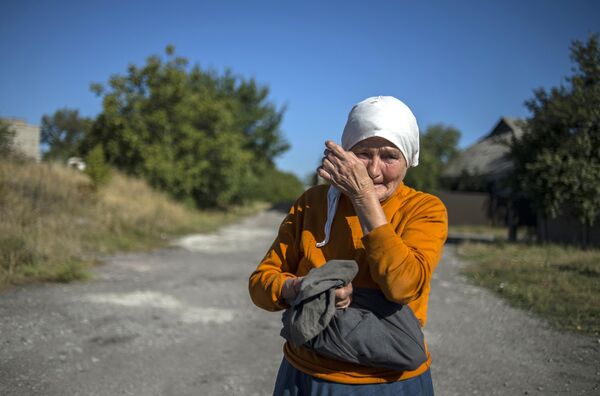
A woman wipes away tears near a convoy of vehicles from the 38th Russian humanitarian convoy to Donetsk in September 2015. For many residents of Donbass, humanitarian aid convoys consisting of food, medicines, and basic hygiene products became critical to survival.
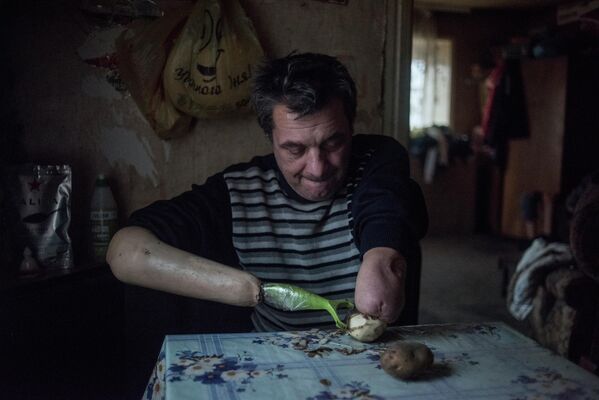
51-year-old Yuri Yanush, who lost both arms before the war, peels potatoes. He lives in the village of Gurty outside the city of Donetsk. Single people with handicaps have no one to depend on, and have no hope of receiving normal medical care. Many cannot find employment. Regular shelling is the reality in which people who already live difficult lives even in times of peace are forced to exist.
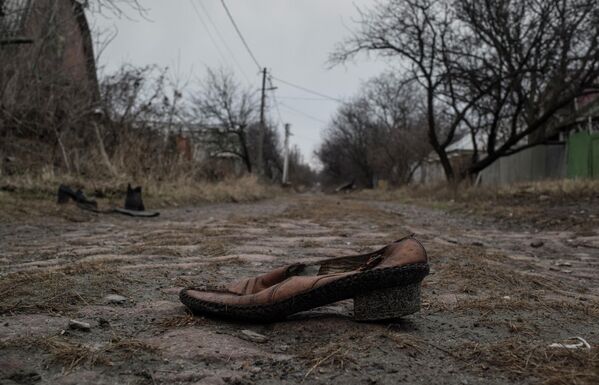
A lost shoe on the road to Donetsk’s Kievsky district. Donbass has literally been cut in two by the war. Once one of the most densely populated regions of Ukraine, many of its cities and towns have found themselves on opposite sides of the contact line since the spring of 2014. For example, the village of Zaitsevo is divided by streets. On Marshal Rybalko Street (which runs about 12 km), residential buildings 1-230 were under the control of the DPR, while houses 230-400 were controlled by Kiev.
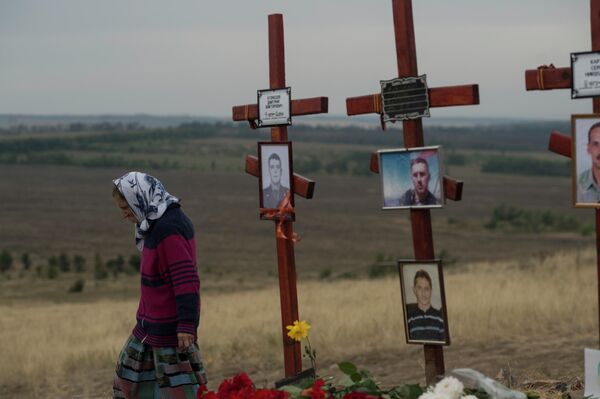
A woman walks past the graves of militia fighters who died in battles with the Ukrainian Army near the Saur-Mogila height. In 2014, the area saw heavy battles, just as it had during the Great Patriotic War. It’s difficult to count how many young men have been killed in the eight-year-long war in Donbass. According to the United Nations, over 13,000 people have died in the conflict, among them husbands, brothers, fathers, and sons who lost their lives defending independence and the right to live on their land, the rights of their families to learn and speak Russian, the right not to support the radical nationalist course of contemporary Ukraine.

